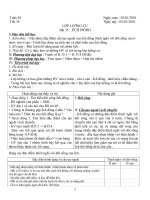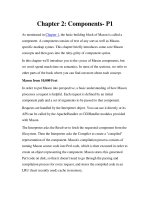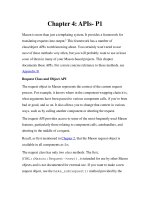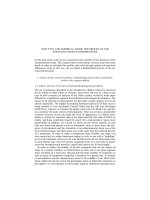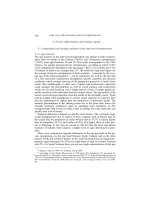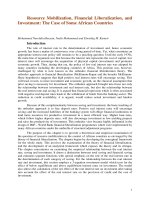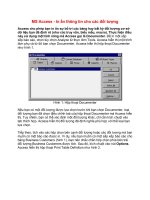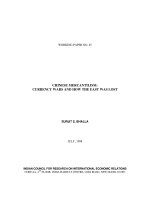Tài liệu African Intellectuals in 19th and early 20th Century South Africa pptx
Bạn đang xem bản rút gọn của tài liệu. Xem và tải ngay bản đầy đủ của tài liệu tại đây (2.3 MB, 88 trang )
Free download from www.hsrcpress.ac.za
African
Intellectuals
in 19th and early 20th century
south africa
Free download from www.hsrcpress.ac.za
Free download from www.hsrcpress.ac.za
Edited by Mcebisi Ndletyana
African
Intellectuals
in 19th and early 20th century
south africa
Free download from www.hsrcpress.ac.za
Commissioned and funded by the Amathole District Municipality (East London) and
the National Heritage Commission. Compiled within the Democracy and Governance
Research Programme of the Human Sciences Research Council
Published by HSRC Press
Private Bag X9182, Cape Town, 8000, South Africa
www.hsrcpress.ac.za
First published 2008
ISBN 978-0-7969-2207-6
© 2008 Human Sciences Research Council
The views expressed in this publication are those of the authors. They do not
necessarily reflect the views or policies of the Human Sciences Research Council (‘the
Council’) or indicate that the Council endorses the views of the authors. In quoting from
this publication, readers are advised to attribute the source of the information to the
individual author concerned and not to the Council.
Copyedited by Angela Briggs
Typeset by Simon van Gend
Cover design by FUEL
Print management by comPress
Distributed in Africa by Blue Weaver
Tel: +27 (0) 21 701 4477; Fax: +27 (0) 21 701 7302
www.oneworldbooks.com
Distributed in Europe and the United Kingdom by Eurospan Distribution Services
Tel: +44 (0) 20 7240 0856; Fax: +44 (0) 20 7379 0609
www.eurospangroup.com/bookstore
Distributed in North America by Independent Publishers Group (IPG)
Call toll-free: (800) 888 4741; Fax: +1 (312) 337 5985
www.ipgbook.com
Free download from www.hsrcpress.ac.za
Contents
Foreword vii
Acknowledgements x
1. Introduction 1
Mcebisi Ndletyana
2. Ntsikana 7
Vuyani Booi
3. Tiyo Soga 17
Mcebisi Ndletyana
4. John Tengo Jabavu 31
Mcebisi Ndletyana
5. Mpilo Walter Benson Rubusana 45
Songezo Joel Ngqongqo
6. Samuel Edward Krune Mqhayi 55
Mncedisi Qangule
Notes 67
Picture credits 71
Contributors 73
References 75
Free download from www.hsrcpress.ac.za
Part of the Eastern Cape, showing the home to Ntsikana, Tiyo Soga, John Tengo Jabavu, Mpilo Walter
Benson Rubusana and Samuel Edward Krune Mqhayi.
Free download from www.hsrcpress.ac.za
vii
The 1998 Nobel Prize Laureate for
Economics, Amartya Sen, has written a very enlightening and engag-
ing book on contemporary India, The Argumentative Indian: Writings
on Indian Culture, History and Identity (2005). This book of essays is
enlightening because it seeks to situate contemporary India, its culture,
politics and aspirations, within the context of an ancient historical tra-
dition of diversity and heterodoxy. For this he draws from and reinter-
prets India’s literary traditions, philosophy, culture and religions, so
as to understand and distinguish claims to authenticity and indige-
neity within societies that have long intermingled and been affected
by a diversity of influences. Likewise, the essays are engaging because
they take issue with many of the truth claims in contemporary Indian
politics about secularism and Hindu nationalism, they revisit ancient
Sanskrit and Hindi texts, and they offer refreshing interpretations that
are sure to make many fundamentalists uneasy and unsure.
This recovery of ancient wisdom is an exercise in the recovery of
intellectual traditions as a tool to a better understanding of contempo-
rary society. Such an exercise is equally valuable in South Africa. It is
important if we are to understand the roots of debate and engagement,
and the world of ideas and the influences which shaped the thinking of
African men and women of ideas in the nineteenth and early twentieth
centuries. It requires of us a very rigorous re-examination of the claims
that are being made in today’s politics, culture, philosophy and reli-
gion. It establishes the value of an intellectual tradition that is rooted
Free download from www.hsrcpress.ac.za
AFRICAN INTELLECTUALS
viii
in the cultures and common wisdom of the people, and yet is influ-
enced by the cultures of the settler communities without the loss of
language and traditions. Sen uses the laconic expression that ‘voice is
a crucial component of the pursuit of justice’. That suggests to me that
during times of oppression or national crisis (which marked much of
the nineteenth century), the poets, preachers and writers gave voice to
the silent. Elsewhere he recalls a visit to his native Bengali village. An
old man who was very poor and most probably illiterate commented in
conversation with the famous laureate, ‘It is not very hard to silence us,
but that is not because we cannot speak’. African societies in colonial
South Africa reflected their own elements of the Enlightenment, the
tradition of dialogue, the ‘argumentative’ part of Sen’s title. The critical
voices that expressed the minds of those deprived of voice by reason of
their status in life and the opportunities that passed them by, and the
pride of language and culture that was the mainstay of their identity and
human aspirations are embodied in the personalities whose characters
are sketched in this volume. They represent a few of the well-known
intellectuals of their time, literary geniuses and social commentators
who transcended both their own cultures and the confines of the mind
that missionary education and religion sought to impose on them.
The benefit of these studies is that they give insight into a period
in our country which has been all but lost through the intervening 50
years of apartheid rule, and through the quislingite re-interpretations
of Bantustan control mechanisms. Even more important, the intellec-
tual traditions represented here, far from being uniform, expose the
heterodoxy of those early intellectuals in our country. Nor is this an
exercise in showing a bias towards the Eastern Cape in the understand-
ing of this country’s intellectual tradition. In looking to the roots and
sources of the liberation tradition long before the ANC’s inception in
1912, it demonstrates that beyond the confines of the geo-political pe-
culiarities of colonial boundaries and Boer republics, black South Af-
ricans had begun to speak a common language and shared a common
Free download from www.hsrcpress.ac.za
ix
FOREWORD
aspiration. Beyond the intellectual acuity revealed in these studies, we
have a study in social and political leadership worthy of emulation
during our trying times.
This is deliberately set as a popular reader in order to make these
giants of the intellectual tradition of the nineteenth and early twentieth
centuries available to ordinary South Africans, especially the younger
generation. The Human Sciences Research Council, the National Her-
itage Council, and the Amathole District Municipality (East London)
are to be commended on this timely publication.
Professor N Barney Pityana
Vice-Chancellor and Principal, University of South Africa
Free download from www.hsrcpress.ac.za
Free download from www.hsrcpress.ac.za
xi
This book is timely and its value is
timeless. The literature on South Africa’s first native encounters with
Europeans, particularly resistance against colonial dispossession, often
depicts one dimension of Africans – the warrior tradition. These early
encounters are often narrated by colonialists or early missionaries, the
very same individuals whose mission was to convert natives into their
own subjects, thereby moulding them into their own image. Such lit-
erature has always posed a dilemma as it is inherently biased when told
from one side of the conflict.
Yet, material collected from oral tradition or orature tends to be
complex. Sometimes it is figurative rather than factual and thus suffers
from distortions over time. What has always been lacking is the Afri-
can voice that reflects on how Africans experienced and interpreted the
early encounters with Europeans. The works and social histories of the
early modern African intellectuals have the greatest potential of closing
this yawning gap, and this book is a major contribution in this regard.
This slim volume gives a voice to Africans in a manner that makes
us understand how they interpreted and reacted to colonial conquest
and the missionary proselytising project. It also reveals an intricate
and complex process in which these public intellectuals had to straddle
both the Western and the African worlds in which they were grounded
or exposed. It is this interplay between tradition and modernity within
the social, political, religious and economic spaces of these scholars
that makes it valuable.
Free download from www.hsrcpress.ac.za
AFRICAN INTELLECTUALS
xii
The National Heritage Council of South Africa has the specific
mandate of transforming the heritage landscape of South Africa by,
among other things, mainstreaming the living, or ‘intangible’, heritage
which has always been marginalised or subverted. This volume is a
product of many role-players who collaborated in supporting its suc-
cessful execution and completion. The National Heritage Council, Hu-
man Sciences Research Council, Amathole District Municipality and
Fort Hare University worked together to provide both intellectual and
financial resources. This partnership of a heritage institution, a mu-
nicipality, a research institution and an institution of higher learning
is a model that can be used by others when faced with such a complex
project with limited resources.
It is hoped that this pilot project, which focuses on the Eastern
Cape, will be extended to other parts of the country in order to give
witness to the role of public intellectuals who, in many ways, formed
the foundation of the modern nationalist liberation struggle against
colonialism and apartheid.
We have to commend the intellectual leadership provided by Dr
Mcebisi Ndletyana, who was the project leader and manager of the
project. Dr Xolela Mangcu deserves our gratitude for the formative
role he played in the conceptual stage of this book. Our special ap-
preciation goes to each of the authors – Ndletyana, Mncedisi Qangule,
Vuyani Booi and Songezo Joel Ngqongqo – for their dedication and
commitment to producing this volume. Luvuyo Dondolo from the
Amathole District Municipality, especially, deserves a special mention
for the important role he played in the evolution and completion of
this book. East London’s Amathole District Municipality has played
a pioneering role in many heritage-related initiatives, notably the
Eastern Cape heritage trail.
National Heritage Council, South Africa
Free download from www.hsrcpress.ac.za
1
1
INTRODUCTION
Mcebisi Ndletyana
This slim volume profiles the lives
and works of five individuals: Ntsikana, Tiyo Soga, John Tengo Jabavu,
Mpilo Walter Benson Rubusana and Samuel Edward Krune Mqhayi.
These individuals played a pioneering role in the evolution of intel-
lectual activity among Africans in the nineteenth century. They distin-
guished themselves in their various fields, rising to become the most
influential of the early African intellectuals in South Africa.
We take our definition of an intellectual from the Italian scholar
Antonio Gramsci. Intellectuals are individuals who, by virtue of their
position in society and intellectual training, are preoccupied with ab-
stract ideas, not only for self-gratification, but also to fulfill a public
role. Intellectuals explain new experiences and ideas in the most ac-
cessible and understandable ways to the rest of society. This is particu-
larly so in a society that is undergoing a transition, where people are
grappling with and seeking to make sense of the new and unknown
world. Intellectuals thus provide answers and leadership mainly in the
conception and articulation of ideas.
These early intellectuals, based in the Cape, owe their rise to the
cumulative impact of missionary activities, as well as to British colo-
nialism. Missionaries first arrived among Xhosas in September 1799.
The pioneer of this evangelical mission was Johannes van der Kemp
(known as ‘Nyengana’ – one who comes secretly – among locals), a
medical doctor and scholar from the London Missionary Society. Fifty
years later, eleven missionary societies, with a total of no fewer than
150 personnel, had established themselves on South African soil. By
Free download from www.hsrcpress.ac.za
AFRICAN INTELLECTUALS
2
the formation of the Union, in 1910, the number of priests stood at
2 000, and the number of missionary societies had jumped to more
than thirty.
Missionaries used education and literature to spread the gospel:
education enabled potential converts to read the Bible. For this reason,
mission stations were centres of learning. The most prominent mis-
sion station was Lovedale, founded in 1820, in Alice. Lovedale counted
priests and teachers, who were subsequently employed to ‘save more
souls’, among its graduates. They spread literacy and Christianity
among fellow Xhosas.
The Bible and newspapers were the most common pieces of lit-
erature among the indigenous Xhosa population at that time. Literary
work itself was first initiated in 1824, with the production of a small
spelling-book published at the Chumie (Thyume) Mission Press. The
first newspaper, Umshumayeli Wendaba (The Publisher of News), was
launched in July 1837. Though lasting for only four years (closing in
April 1841), Umshumayeli produced 15 editions at three-month inter-
vals and was a pioneer of newspapers among the indigenous popula-
tion. It was followed by many other publications: Isibuto Samavo (A
Collection of Stories) in 1843; Ikwezi (The Morning Star) in August 1844;
Isitunywa Senyanga (The Monthly Messenger) in August 1850; Indaba
(The News) in 1861; and Isigidimi Sama-Xosa (The Xhosa Express, later
changed to Christian Express, then to South African Outlook) followed
in 1881. The 1880s saw the launch of the first ever non-missionary
newspaper, Imvo Zabantsundu (Native Opinion), and was followed by
yet another milestone in 1897, the founding of the first independent
African newspaper, Izwi Labantu (The Voice of the People). The early
newspapers enjoyed a relatively brief lifespan due mainly to military
turbulence on the frontier and lack of a wide and consistent reader-
ship. Only three African-focused newspapers in the Cape survived into
the twentieth century: Imvo, Izwi and Christian Express.
Education among Africans received a colonial boost from 1854
onwards. The colonial state undertook to ‘subsidise missionary insti-
Free download from www.hsrcpress.ac.za
INTRODUCTION
3
tutions that would undertake to train Bantu youth in industrial oc-
cupation and to fit them to act as interpreters, evangelists and school
masters among their own people’. New schools were built, including
Healdtown, St Matthew’s, St Mark’s, Salem, Peelton, and Mount Coke,
among others. Facilities such as Lovedale were improved. African en-
rolment in government aided schools rose to 49 555 by 1887. Between
1874 and 1904, 1 502 teachers were trained at various training schools
and by 1887 more than 2 000 pupils had received secondary education
at Lovedale alone. Other high school graduates went on to become
religious ministers, journalists, labour agents, legal assistants and in-
terpreters.
These post-1854 ‘civilising’ initiatives were a result of a policy shift
within the colonial administration to pursue a ‘policy of civilisation’.
The British had colonised the Cape in 1806, but official opinion was
divided over whether to place the locals under British rule, or let them
be. Needless to say, disagreement over policy did not render territor-
ial conquest unimportant. The British expanded their colonial terri-
tory by dispossessing Xhosas through repeated wars. By 1850, colonial
boundaries had been extended from the eastern bank of the Fish River,
where boer-trekkers had co-habited with the Xhosas since 1811, to the
Kei River. The very first inter-racial contact between Xhosas and boer-
trekkers had occurred in 1702 around the Fish River, fifty years after
Dutch settlers had first docked their ships on the Cape shores.
The civilising policy owed much to the Victorian convictions of
its colonial administrator, Sir George Grey. He believed that ‘the na-
tives’ were not intellectually inferior to the rest of the human race
and thus could be easily civilised. And this, Grey believed, could be
achieved through the imposition of British law, education, and conver-
sion to wage labour, and through colonial settlement among the ‘na-
tives’. The law and education would instill civilised values, while wage
labour would nurture ambition for material improvement. Colonial
settlers would serve as an example of civilised character as well as pro-
vide further employment on their farms. Christianised and civilised,
Free download from www.hsrcpress.ac.za
AFRICAN INTELLECTUALS
4
Grey believed, the Xhosa would cease being a British foe, and become
a friend. Peace would eventually prevail in the frontier. And after the
catastrophic effects of the 1855/56 cattle killing and destruction of
crops, as Xhosas complied with the Nongqawuse prophecy, the Xhosa
did become notably vulnerable to colonial influence. An estimated 30
000 left their homes for the colony in search of employment.
Thus the colonial state and the missionary enterprise shared a
common objective: to create an indigenous middle class that would
share similar value systems and economic interests to the settler com-
munity. This middle class would, in turn, be protective of the colonial
society, serve as a pacifier of the Xhosa community, and help to spread
‘civilisation’. The doyen of South African missionaries, John Phillip,
emphasised the link in 1820:
Tribes in a savage state are generally without houses, gardens, and fixed
property. By locating them on a particular place, getting them to build
houses, enclose gardens, cultivate corn land, accumulate property, and
by increasing their artificial wants, you increase their dependency on
the colony, and multiply the bonds of union and the number of securi-
ties for the preservation of peace.
Peasantry provided another route towards middle-class status. Mis-
sions not only provided teaching on farming, but also land on which
to farm. Missionaries had access to vast tracts of land. By 1848, for
instance, the colonial administration had issued 70 000 acres of land
to mission stations, while another 155 000 acres was held by virtue of
tickets of occupation. Individuals could lease mission land and gener-
ate income for themselves and to pay rent and taxes.
The civilising mission also decreed that the franchise be open to all
males regardless of race, subject to property and income qualifications.
Voting was done by word of mouth. To qualify, one needed proper-
ty worth twenty-five pounds, or to receive an annual salary of fifty
pounds. One also had to be a natural-born British subject. This meant
only the Mfengus, among the Xhosa, were eligible for the franchise.
Others became eligible later, notably from 1879 onwards, as more
Free download from www.hsrcpress.ac.za
INTRODUCTION
5
‘native territories’ fell to Britain. The Xhosa vote became a decisive one
in some constituencies. Some English-speaking liberal politicians, for
instance, owed their election to Nguni voters.
In short, early African intellectuals were a product of the mission-
ary enterprise and the British civilising mission. They were part of a
new middle class that the colonial agents wanted as a buffer between
colonial society and the rest of the indigenous population. Members of
this middle class were also intended to become agents of the civilising
mission themselves. They were Christian converts (and later priests),
and graduates of missionary schools. Many of them went on to play
leading roles in the various aspects of the emerging modern society.
Beneficiaries of the civilising mission they were, yet they refused to
define themselves in the image of their colonial benefactors. Rather,
they re-defined themselves, combining the best of the two worlds into
what became a modern African identity and a unique contribution to
South African modernity.
Popular recollection of the history of Africans often centres on
colonial conquest, and recalls Africans solely as recipients of moder-
nity. Yet, early converts were more than just recipients, but went on to
become co-architects of South African modernity in their own right.
In the area of Christianity, which was embryonic in early nineteenth
century South Africa, Ntsikana made a pioneering contribution to
hymn-writing in Xhosa, and combined Christianity with the indig-
enous value system. He demonstrated, as is now a commonplace, that
one could be Christian while also adhering to one’s own value system.
The two were not mutually exclusive. Soga counselled pride in African
history, and spoke of African ability at the height of colonial racism
in the 1850s. His views laid the basis for the genesis of the black con-
sciousness movement more than a century later. Jabavu initiated black
newspapers and popularised the culture of reading within the black
community, not only for its intrinsic value but also to promote popu-
lar participation in the political process. If Jabavu encouraged reading
within the African community, Mqhayi pioneered African literature.
Free download from www.hsrcpress.ac.za
6
AFRICAN INTELLECTUALS
And Rubusana advocated for an idea that is only now gaining real trac-
tion within the education sector – mother-tongue instruction.
We trust that this volume whets your appetite for more informa-
tion about early African intellectuals, and stimulates much further re-
search into their lives – and the lives of other South African men and
women – whose stories have so much to teach us, and which have,
until recently, been ignored though not forgotten.
Free download from www.hsrcpress.ac.za
7
2
NTSIKANA
Vuyani Booi
Ntsikana, the Xhosa prophet,
formed an important link between the traditional and the modern
worlds. His story is the story of the penetration of Christianity into
the eastern regions of the Cape colony. It is the story of faithful, earn-
est and zealous missionary enterprise. But it is also the story of a clash
of cultures: the old culture of the Xhosa in juxtaposition with the new
European culture of the whites and missionaries. Ntsikana was the
first Xhosa-speaker to convert to Christianity, to preach the Gospel
of Christ, and to compose hymns. He laid the ground for the future
translation of the Scriptures into the vernacular.
NTSIKANA’S CHILDHOOD AND YOUTH
Ntsikana came from the Cirha clan – a royal clan closely linked to
the Rharhabe chiefdom of the western Xhosa, who lived in the area
around the Keiskamma River. His father was a councillor to the
Rharhabe king, Ngqika, and a polygamist with two wives. ‘Nonabe, the
mother of Ntsikana, was the Right Hand (junior) wife. Ntsikana was
brought up among his mother’s kinsmen until he was about five or
six years old. His father then sent for him, having secured his rights by
paying a beast for the boy’s maintenance since infancy. Gaba’s Great
Wife, Noyiki, tradition holds, had only one child, a daughter, and so
she adopted Ntsikana according to custom as Gaba’s heir’. From this
time, Ntsikana was to make his home in the Great Place of Ngqika in
the Thyume Valley on the banks of the Thyume River.
1800 was a transformative year in the young life of Ntsikana. It
plunged him into two contradictory worlds. He underwent the cus-
Free download from www.hsrcpress.ac.za
8
An artist’s impression of Ntsikana (c 1780–1821), the Christian prophet, royal counsellor, and
hymn-writer. Ntsikana came from the most ancient of all Xhosa royal lineages, the Cirha,
and was aligned with the Xhosa King Ngqika throughout his life. It was at Ngqika’s Great
Place in the Thyume valley that he first heard the message of the missionary Van der Kemp.
When he accepted his prophetic role he symbolically washed himself of the red clay worn by
traditional Xhosa, thereby signalling a complex relationship with the forces of change on the
frontier. While he accepted the spiritual message of Christianity he remained deeply suspicious
of the impact of colonists, and seems to have forseen the divisive impact, on the Xhosa, of King
Ngqika’s collaboration with colonial authorities. Ntsikana was at Ngqika’s Great Place when
Ngqika’s army was defeated by his rival Ndlambe at the great battle of Malinde (or Amalinde)
on the Debe Plain in 1818.
Free download from www.hsrcpress.ac.za
NTSIKANA
9
tomary circumcision, and was also initiated into the world of Christi-
anity. The first missionary among the Xhosa, Dr Van der Kemp, who
had arrived in the Cape in September 1799, had settled among King
Ngqika’s people. Since Van der Kemp had come sneakingly, as if by
accident, the locals named him Nyengana and so he is known through-
out history to this day.
Though his stay among the Ngqika was brief, leaving as he did at
the end of 1800, Van der Kemp had a formative influence on the young
Ntsikana and the Ngqikas. They still talk of the fiery soldier of Christ
– Dr Van der Kemp – extolling the heathen Ngqikas to obey the com-
mand given by his Master and Saviour – ‘Go ye and teach all nations.’
THE BIRTH OF A PROPHET
As he grew older, Ntsikana complained that there was this ‘thing’ – as
he called it – that he could not shake off, which appeared to follow
him wherever he went, haunting his very existence. One of Ntsikana’s
‘hauntings’ occurred while he was inspecting his kraal. While admir-
ing his favourite ox, Hulushe, Ntsikana thought he detected something
brighter than usual striking the side of his beast. ‘As he looked at the
animal, [his] face betrayed exciting feelings, and he thus enquired from
the lad standing near by: “Do you observe the thing I now see?” The
lad, turning his eyes in the direction indicated, replied: “No, I see noth-
ing there.” Ntsikana, recovering from his trance, lifted himself from
the ground, on which he had meantime stretched himself, and said to
the puzzled boy: “You are right; the sight was not meant to be seen by
your eyes”.’
Another epiphany struck at a wedding ceremony. As was customary
at such occasions, the men performed umdudo (the wedding dance).
Though a keen and capable dancer from adolescence, on this occasion,
and to the disappointment of the gathering, Ntsikana is said to have
been reluctant to participate in the ritual. After repeated prodding by
the crowd, he ultimately conceded and gave a fantastic performance.
But something completely unexpected suddenly happened – a gale
Free download from www.hsrcpress.ac.za
10
AFRICAN INTELLECTUALS
force wind began to blow, accompanied by lightning and the clapping
of thunder. This shocked the crowd and brought Ntsikana to a sud-
den halt. Ntikana started dancing again when the phenomenon disap-
peared. But that was not the end of it, as the narrative goes:
Immediately the gale arises once more! Again Ntsikana returns to his
seat, crest-fallen as ever; and the wind ceases. A third time, he gets up,
and a third time this horrid gale arises as furiously as ever. The inter-
ested and superstitious gazers exchange looks of astonishment at this
strange occurrence repeating itself each time the son of Gaba rises to
join the dance! Who has bewitched him?
This experience prompted Ntsikana to leave the wedding ceremony
early, much to the astonishment of his two wives.
The Xhosa novelist and educator AC Jordan described the light
that appeared in the earlier incident around his kraal as an ‘illumina-
tion of the soul…’ According to Jordan, Ntsikana realised that his life
task was to spread the word of God. But it took the later incident at
the dance to convince Ntsikana that the ‘thing’ that had been haunting
him was actually a calling to Christianity, to become an agent of the
Gospel. The wind represented the power of the supernatural forces,
combined with the missionary doctrine, that pulled Ntsikana out of
his own culture and religion.
It was a ‘slow evolution’ that made Ntsikana a stranger among his
own people. But though the evolution was slow, the gale wind became
a turning point in the life of Ntsikana. It was after this incident that
Ntsikana threw ‘aside his blanket, plunged himself into the water and
washed off all the red ochre that painted his body’. The throwing aside
of his blanket could be analyzed as an effort to disown and discard his
culture and traditions, while the water was a symbolic representation
of Christian baptism: washing off all the red ochre that painted his
body was a symbolised washing away of sins committed.
Now a Christian, Ntsikana renounced polygamy. He divorced one
of his two wives, Nomonto. At this time it would seem as if he was
ready to begin his ministry among his people. But he had competition.
Free download from www.hsrcpress.ac.za
NTSIKANA
11
Vying for the ear of his people was Nxele, a one-time witch doctor,
now akin to a clairvoyant. What was most disturbing was that many
chiefs were listening to him. Feel Ntsikana’s exasperation:
‘uNxele ubuquqekile, ubalahlekisela nina abantu?’ (Nxele has turned
upside down, why does he mislead the people?)
A CONFLICTED MISSIONARY AGENT
Though committing himself to Christianity, Ntsikana nonetheless
still experienced a conflict between indigenous belief systems (Inkolo
yakwaNtu) and the foreign belief system (Inkolo yaseMzini). He was
not ignorant of the fact that the civilisation and religion of white men
demanded the sacrifice of other cultures and belief systems, while it
positioned itself as ‘the’ culture and belief system from which civilisa-
tion of other nations had to proceed.
But the symbolic washing away of red ochre was akin to washing
away a substance which had ingrained itself into the practitioner’s skin
and blood and become part of the believer’s system. Red ochre repre-
sents Xhosa culture, traditions and indigenous belief systems. It was in
fact impossible to wash these away. Ntsikana was to incorporate these
into the hybrid creed that he disseminated among his own people.
His was an ongoing tension. Earlier, whilst still a boy, he had re-
fused to be baptised by white missionaries, even though he claimed
to have accepted Christianity. This conflict was not unusual among
Xhosa converts, and merging the Christian Gospel with traditional be-
lief systems was a major challenge that all missionaries of the time had
to deal with.
Ntsikana conceptualised and constructed his religion in a way that
would attract and accommodate the various cultural dimensions of
his own people. Because of that fusion, Ntsikana was able to advance
Christian beliefs within the African community. He established vari-
ous congregations in the Transkei: Fort Beaufort, Mankazana Valley,
Somerset East, Burnshill, Debe Nek, King William’s Town and at Mg-
wali. Among his initial recruits were King Ngqika, Noyi and Matshikwe
Free download from www.hsrcpress.ac.za
12
AFRICAN INTELLECTUALS
(Ntsikana’s two closest friends), Kobe and Dukwana (his sons), Soga
(Ngqika’s counsellor) and Zaze and Festiri Soga (Soga’s sons), and the
Jwara clan of Soga.
Ntsikana acknowledges his Christian influence over the Soga house-
hold, which was later to produce the towering figure of Reverend Tiyo
Soga, in one of his hymns: ‘Lomzi kaKhonwana siwubizile’ (The house
of Khonwana has been called). Khonwana was a nickname for ‘Old’
Soga. Winning over Soga, a councillor to King Ngqika, was particularly
astute of Ntsikana. Old Soga influenced the king and thus enabled oth-
ers within the community to follow their king into Christianity.
NTSIKANA, MUSICIAN AND COMPOSER
Ntsikana’s success also owed much to his musical compositions. To
him, singing was just as important as preaching. He composed several
Many people visit Ntsikana’s grave at eThwathwa, near Fort Beaufort.
Free download from www.hsrcpress.ac.za
NTSIKANA
13
hymns that spoke to the cultural and traditional experiences of Afri-
cans. They appealed to the (lyrical) nature of Africans and the hymns
are now regarded as classics and still sung today.
‘UMDALI WOBOMI’ (‘LIFE CREATOR’)
He! Nanku’mdali bom wase sikolweni
He! Nanku’mdali bom osibize sihleli
He! Nanku’mdali bom wasinga phezulu
(See! There stands the Life Creator; he of the school
See! There stands the Life Creator; who calls us to rise
See! There stands the Life Creator; he has ascended)
‘INGOMA ENGQUKUVA’ (‘THE ROUND HYMN’)
Elele hom-na Elele hom-na
Latsho e-Gqora; Hom-na Cibini le
Latsho kwaGaga; Hom, hom-na nakwaMankazana
Lafika lathetha; Hom; hom-na! Elele, le
(It was proclaimed at Gqora: Hom hom-na
Also at the Lake of Arms (Peddie): Hom hom-na
It was proclaimed at Gaga: Hom, hom-na
Likewise at Mankazana: Hom, hom-na
There it arrived to speak: Hom, hom-na
Halleluja. Amen: Hom, hom-na).
‘ULO THIXO OMKHULU’ (‘HE IS THE GREAT GOD’)
(This song was further arranged by John Knox Bokwe.)
He, is the Great God, who is heaven
Thou art thou, shield of truth
Thou art thou, stronghold of truth
Thou art thou, thicket of truth
Thou art thou who dwellest in the highest …
